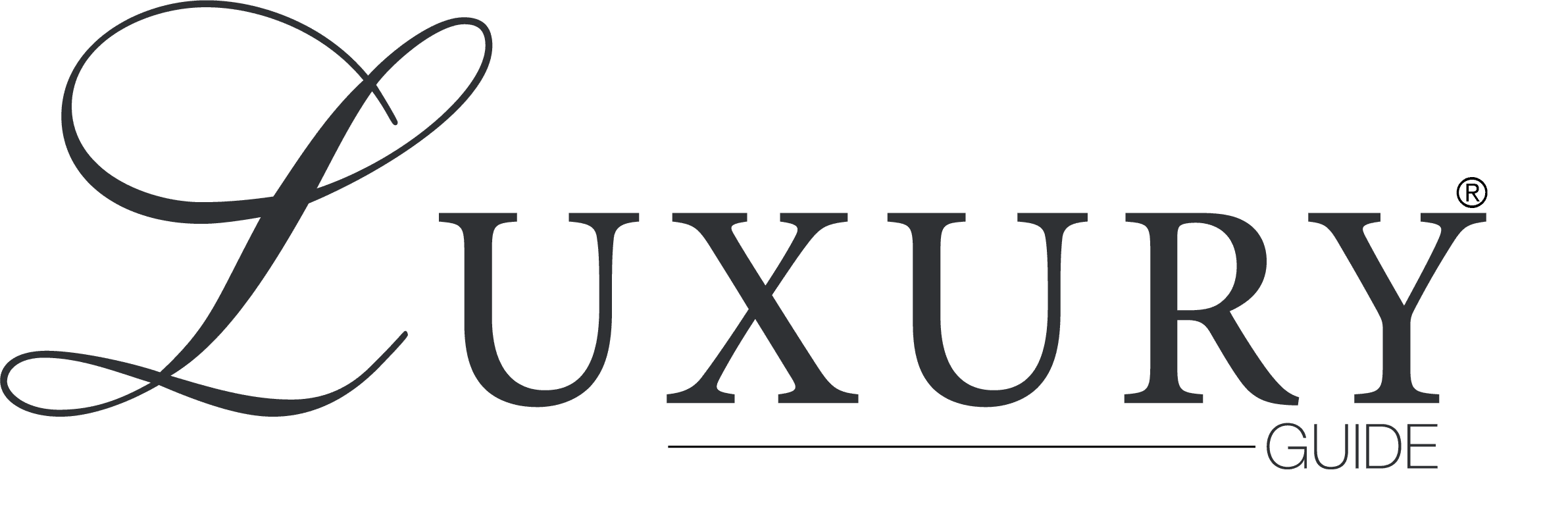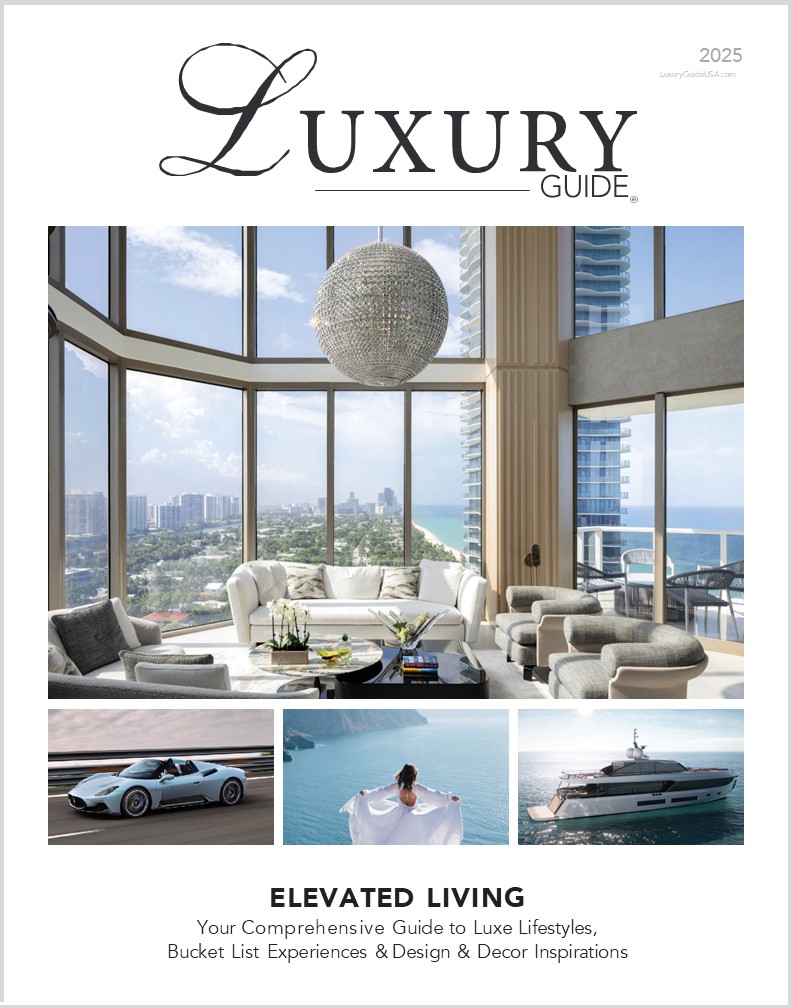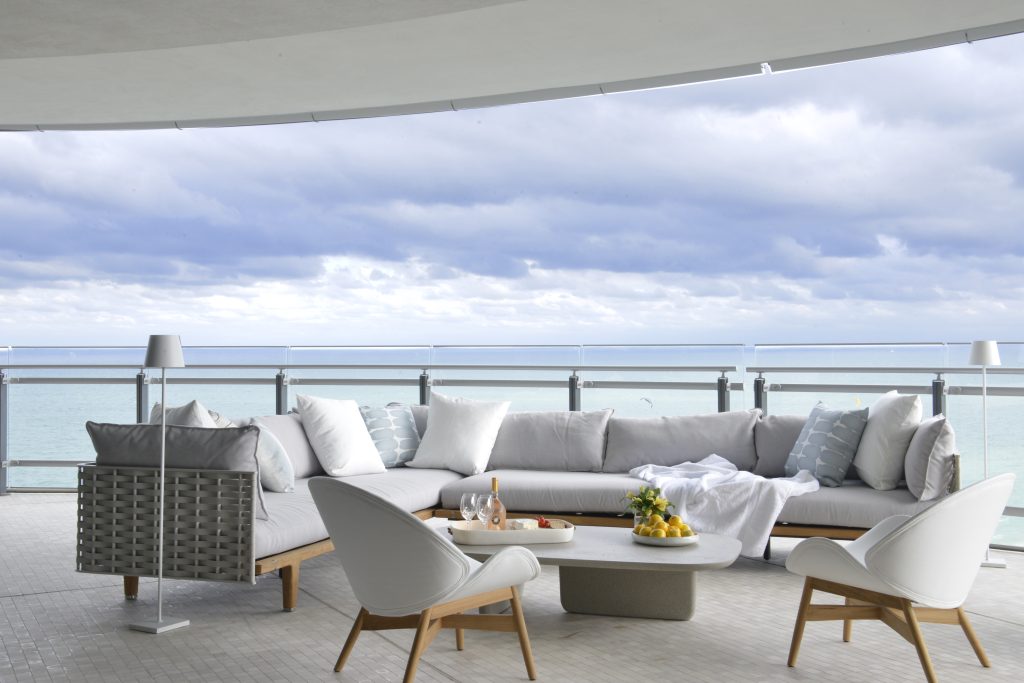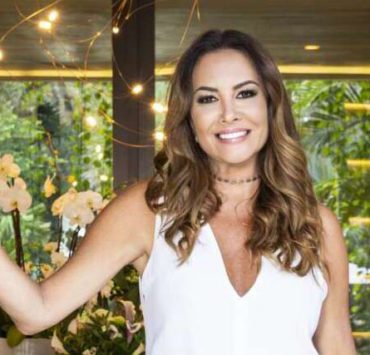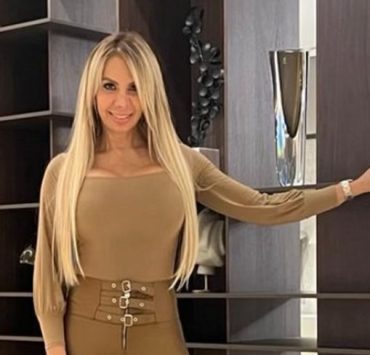Beyond the Surface with Vicente Wolf of Vicente Wolf Associates
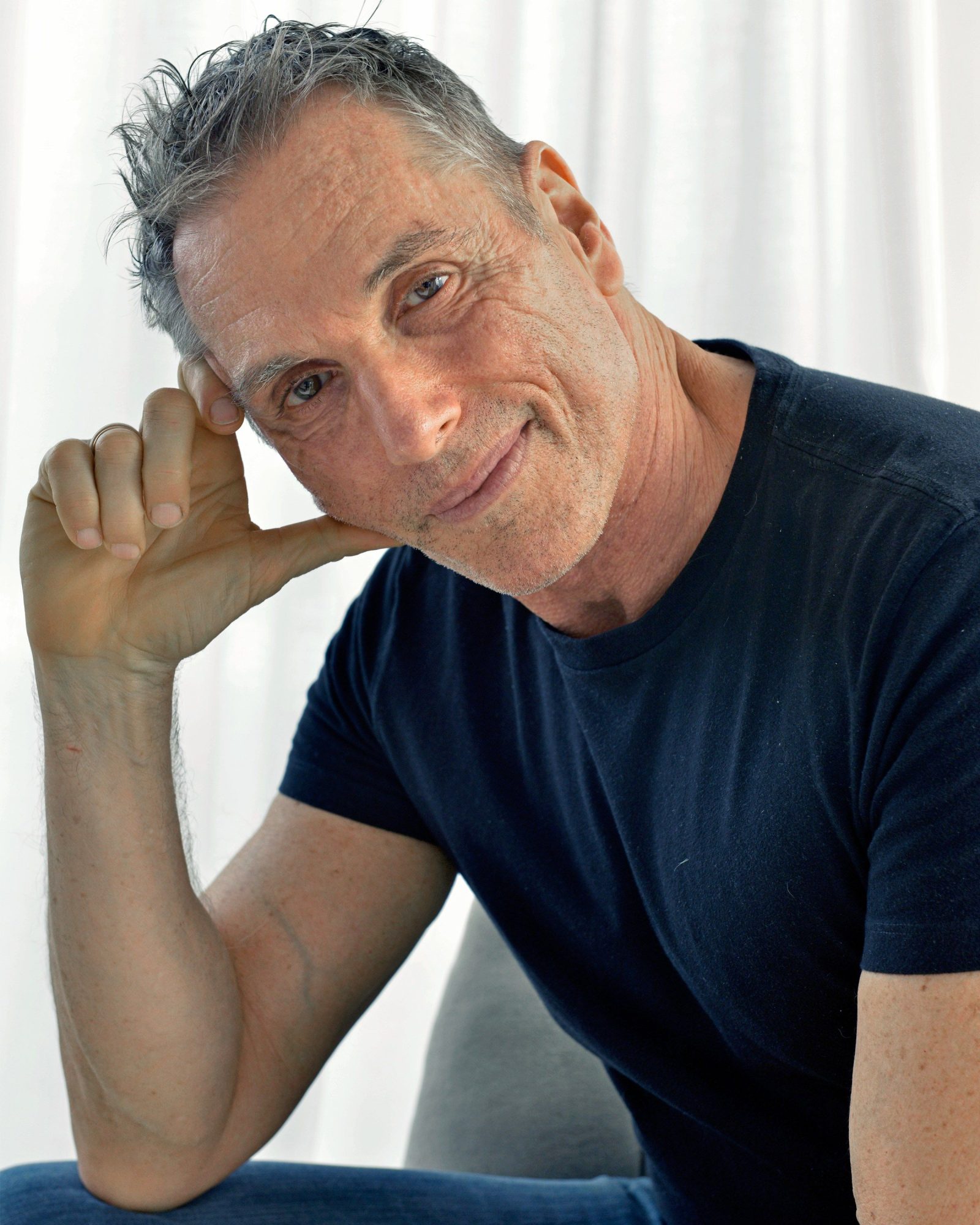
As Featured in Luxury Guide 2024 print edition
A JOURNEY THROUGH TIMELESS DESIGN
Exploring the World of Interior Design with Renowned Creative Visionary Vicente Wolf
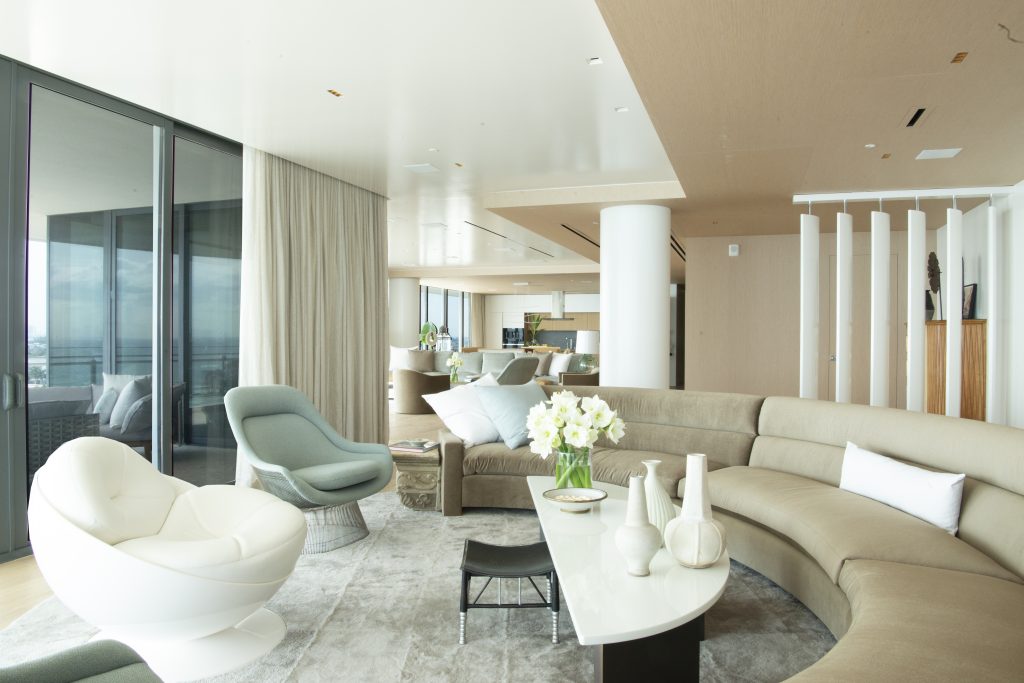
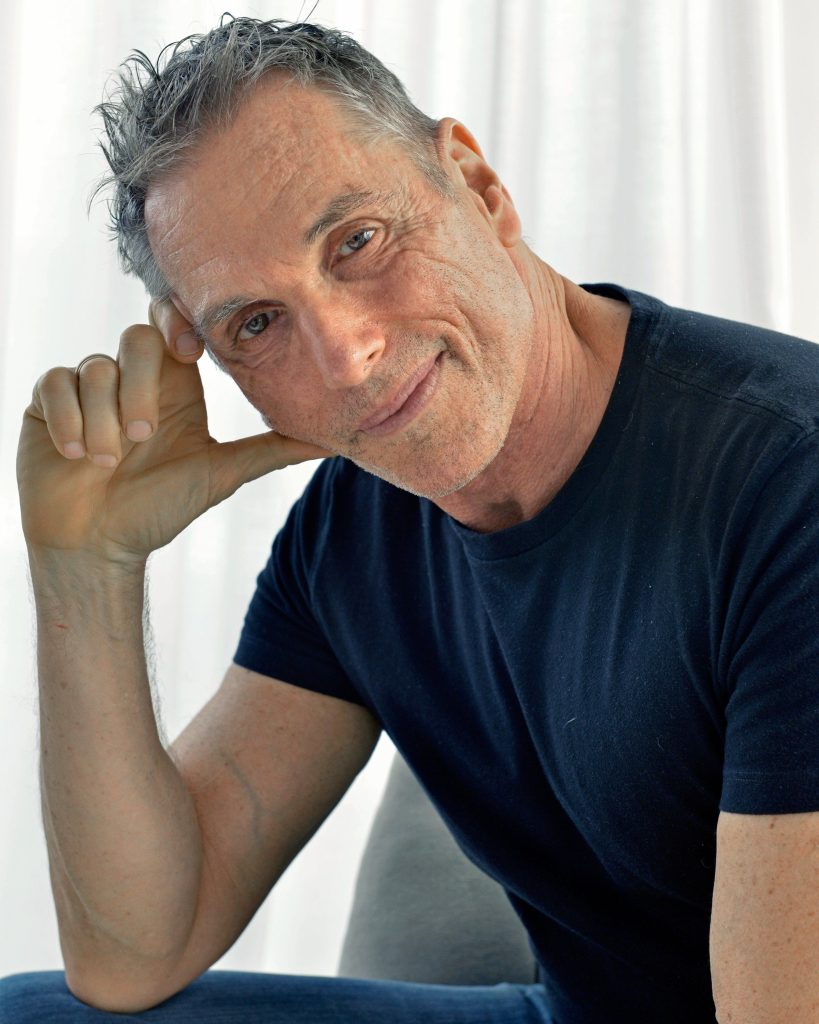
GET TO KNOW VICENTE WOLF | DESIGN PHILOSOPHY AND STYLE
Vicente Wolf, the acclaimed New York City-based designer whose name is synonymous with clear, restrained, elegant aesthetics. With over four decades of creative prowess, Vicente has left an indelible mark on interior design, photography and art collecting. A passionate globetrotter, Vicente’s insatiable wanderlust fuels his unique design perspective. He seamlessly blends authentic, globally sourced artifacts and furnishings with modern decor, crafting spaces with earthy charisma and enduring allure. From a light-filled loft in the heart of New York City, Vicente Wolf Associates has cultivated a design philosophy grounded in simplicity. This philosophy has graced the interiors of multinational conglomerates, private residences, hotels and restaurants worldwide. Vicente’s meticulous eye for detail has earned him the admiration of discerning clients and creative industries. His impressive accolades include being featured in top home publications, receiving prestigious honors such as the AD100 and Elle Décor’s A-List and an induction into Interior Design Magazine’s Hall of Fame. But Vicente is not just a designer; he is an international speaker, a prolific author with five books, a revered retailer and a celebrated visionary. With a Ph.D. in design and architecture from Boston Architectural College, he leads two thriving companies: Vicente Wolf Associates and VW Home by Vicente Wolf. Join us in an exclusive conversation with Vicente as he shares his philosophy, inspirations and journey that has made him a true design titan.
When did you know you wanted to become a designer? I embarked on my design journey nearly 50 years ago. I didn’t follow a traditional textbook path. It began with my upbringing in Cuba within a family rooted in construction. During this time, I cultivated an innate understanding of proportion, scale and plans, which would later serve as a strong foundation for my career. My training encompassed numerous years of visiting museums, extensive travel and client interactions. These experiences continuously evolved and enriched my skill set. I have always been an eager listener and learner, consistently building upon the knowledge and insights I gathered.
Do you require formal education when hiring people? When hiring, I prioritize qualities like character, attitude and willingness to learn over formal degrees. I also seek individuals with skills I lack, such as strong computer proficiency, organizational talents and attention to administrative details. These qualities, combined with shared commitment, are vital to building a well-rounded and effective team.
How do you balance mentoring with your own work? I enjoy explaining my design process. It doesn’t detract from my work; it enhances it. It’s an investment that benefits both the projects and the overall office efficiency. The key is the team members’ willingness to learn and align with my design perspective. Without that, it can be challenging to succeed as a team.
Do you have mentors, and if so, who are they? Why were they influential on your journey?
I’ve been fortunate to have mentors who have played pivotal roles in shaping my career. Angelo Donghia was one of my early inspirations and mentors. When I was just starting, there were individuals with whom I freelanced, like Bob Patino, who was my partner for 20 years. They provided me with opportunities to do what I love. Additionally, influential figures like David Hicks, Billy Baldwin and many designers from the 1920s and 1930s, whom I learned from through books, showed me the importance of following your own creative path rather than conforming to trends. Their guidance and wisdom have been invaluable on my journey.
You have an impressive portfolio that spans various types of projects, from multinational conglomerates to private homes, hotels and restaurants. Can you highlight a particular project that challenged you creatively and how you approached it? I designed the Mizumi restaurant as part of the Wynn Macau, which presented a unique creative challenge. My goal was to create a Japanese dining experience with a modern twist. To achieve this, I incorporated traditional Japanese colors and design elements while infusing a modernist approach to the overall concept and aesthetics.
You’ve been recognized by prestigious awards and accolades throughout your career. If applicable, can you share a moment or achievement that you consider a turning point in your design journey? A turning point in my design journey was when I ventured out on my own in October 1988. Starting my independent career allowed me to explore my creativity and pursue projects that truly aligned with my vision and passion for design.
How do you approach understanding a client’s vision and translating it into a design concept that aligns with their vision while incorporating your own artistic touch? I approach a client’s vision like a portrait painter, listening to their needs and preferences. I then translate their vision through my artistic lens, creating a design concept that aligns with their vision while incorporating my own unique touch. This collaborative approach ensures the design reflects the client’s aspirations while infusing it with my creativity.
Your global travels are a significant source of inspiration for your designs. Can you share a specific experience or destination that had a profound impact on your work and design philosophy? During my travels in Myanmar, I was enlightened by their use of colors and temple contours. This experience inspired me to incorporate similar architectural elements in my designs.
Your approach involves incorporating globally sourced artifacts and furnishings into modern decor. Can you describe a specific piece or element in one of your projects that perfectly embodies this fusion of styles? I once had a client with a contemporary art collection on Central Park West. In my quest for the perfect centerpiece, I stumbled upon an early-19th-century Italian table. To infuse it with a fresh perspective, I replaced its conventional marble top with vibrant orange resin, seamlessly merging the classical with the modern. This transformation embodied the fusion of the old and the new, elevating the space to a new level of aesthetic appeal.
Your designs are often described as clear, restrained and elegant. Can you elaborate on your design principles and how you ensure your creations remain timeless and relevant to your clients? I aim to create spaces rooted in modern design but still incorporate the essence of the past, ensuring they remain timeless and relevant for my clients, avoiding getting trapped in a particular era.
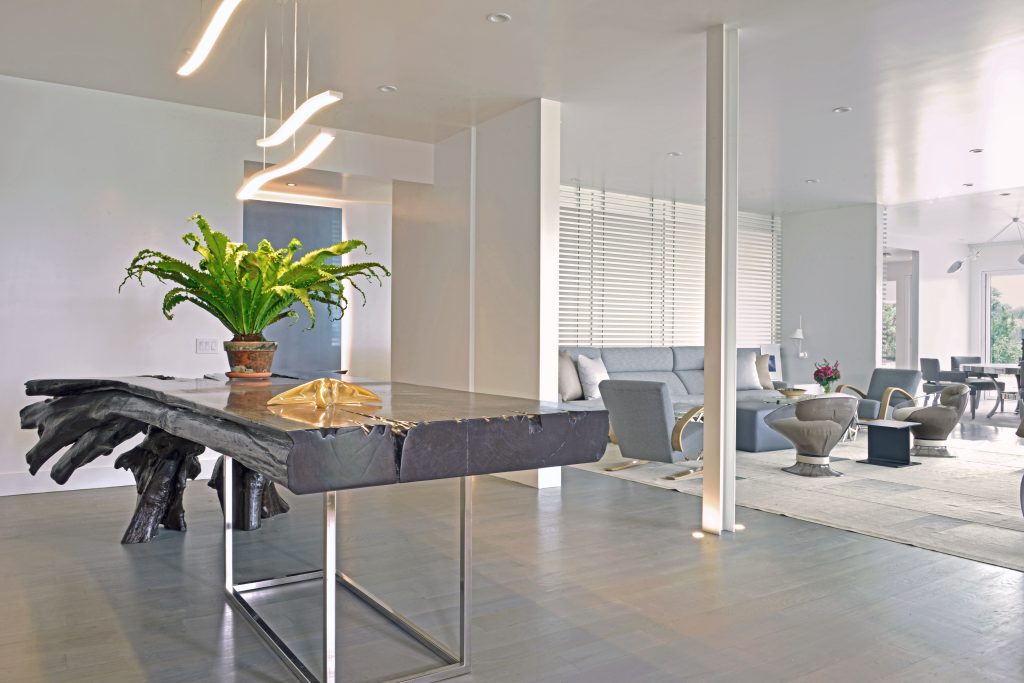
TIPS & TRENDS
With so many options, how do you approach sourcing materials, furniture and accessories for your projects? (For instance, do you begin with the flooring and then progress to the walls, etc.?)
How do you strike the perfect balance between creating a space that is visually stunning and ensuring it remains functional and practical for everyday use?
FLOORS
What is your favorite flooring option? It depends on the space. I like wood floors stained in unusual tones like driftwood and wonderful marbles.
WALLS
Share your thoughts on wall-coverings and panels and when and where they should be incorporated into a design. I love grass cloth and lacquered walls and ceilings.
LIGHTING
How do you approach the selection of light tones, such as choosing between white and yellow lighting, to achieve specific moods or design objectives in a space? I prefer square recessed lights and various light sources, including uplighting, ceiling lights and table lamps.
QUICK DECORATING TIPS
What can someone do to instantly elevate the look and feel of a space? Get rid of unnecessary clutter. Revisit lighting. Open windows up to expose as much natural light as possible.
What’s the significance of incorporating greenery and plants into indoor spaces? Plants are a constant life source. They give a sense of nature that makes a space come alive.
BEYOND THE SURFACE
The path to success is often punctuated by challenges that shape one’s craft and character. There is no doubt that on the surface, Vicente Wolf, a luminary in the design world, has etched his signature on this canvas of aesthetic grandeur. As we venture deeper into his creative journey, we discover that beneath the surface lies a narrative of resilience, triumph and a deep understanding of teamwork.
What does success mean to you? Success means the ability to keep working and stand the test of time. I believe in never retiring from doing what you love. Success is the capability to keep producing work and constantly bring something different and fresh. It’s about not being tied to any trend or style but maintaining a sense of individuality.
What has been the key to your success? The key to my success has been avoiding the temptation to think within the confines of a box and not chasing fleeting trends. Instead, I trust my instincts, create from my gut and aim to keep moving forward. My work has never fallen back into old patterns; it always looks individual and isn’t tied to any specific trend or style.
Designers wear many hats – how do you keep yourself organized? I maintain organization by hiring people who excel in various areas. Everyone on the team has unique skills, and this collaborative effort keeps things running smoothly.
When things get tough, where do you find your motivation to keep going? My motivation stems from the resilience ingrained in my upbringing and family background. My family always pushed forward and displayed great tenacity, which I inherited. Even in the face of challenges beyond our control, one must trust a higher power, have faith in their abilities and do their best. It’s about persevering and not giving in to adversity.
Do you think this resilience is innate or learned? I believe it’s a combination of both. It’s influenced by upbringing, the determination instilled by parents and partly by DNA. Coming from Cuba and a family with a strong refugee background certainly adds to the survival mentality.
What advice would you give to new designers or entrepreneurs starting out? My advice to newcomers is to follow their own path rather than mimic others. It’s not just about being a designer but also a savvy businessperson. The creative aspect is just a small part; the real work lies in running a business. Handling contracts and managing situations and finances are crucial for survival. Being an individual, traveling and seeking inspiration beyond the design world can spark your creativity and set you apart.
Furthermore, I would encourage aspiring designers and entrepreneurs to persevere in the face of obstacles. At the outset of my career, I lacked a clear path and wasn’t certain where life would lead me. Despite my struggles with dyslexia, spelling and organization and commencing my journey with limited financial resources, the design industry has enabled me to lead a life that far exceeded my initial expectations. It has allowed me to travel the world, amass an extensive photography collection and dedicate 15 years to doing what I love. I am profoundly grateful for the remarkable journey I’ve experienced.
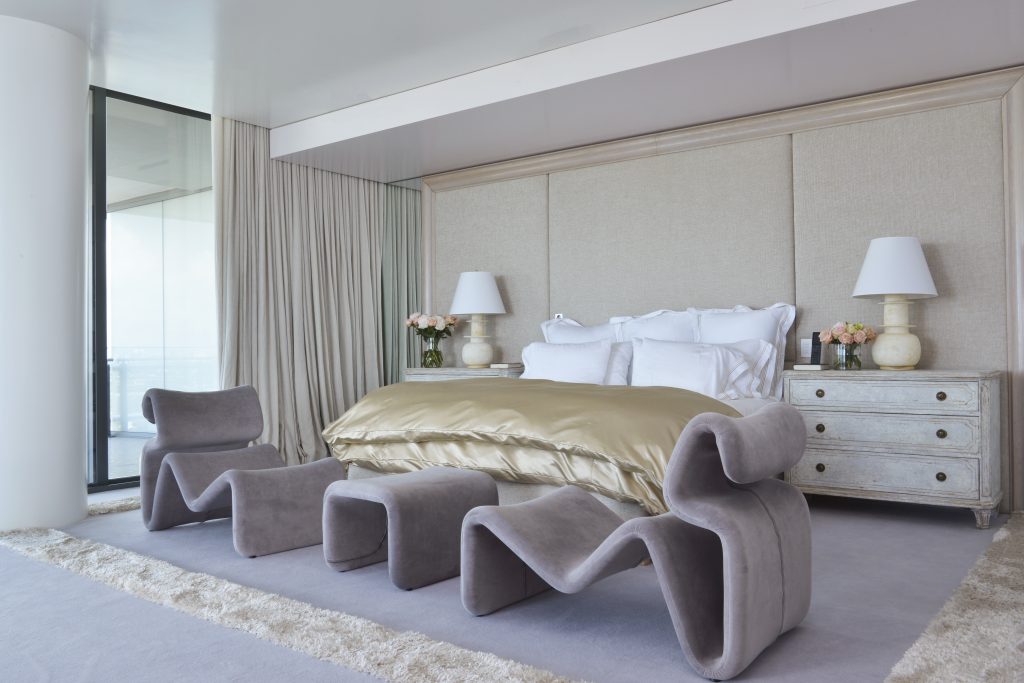 JUST FOR FUN
JUST FOR FUN
Had you not pursued design, what would your other dream job be? Before I ventured into design, my interests spanned a diverse range of fields, including merchandising, advertising, fashion and acting. Photography has always held a special place in my heart; I love its immediacy. In fact, I’ve personally photographed all five of my books, produced various magazine features and even had fine art shows.
If you could have dinner with anyone in the world, who would it be? I’d like to meet individuals who bring a different perspective to the table, even if they think differently from me. One person I’d be interested in meeting is a writer for the New York Times who recently authored a substantial book on Donald Trump and frequently appears on CNN. I’m drawn to people who not only possess intelligence but also offer a unique way of thinking. I’ve had the privilege of working with a range of clients, from Clive Davis to figures in the theater world. While I love spending time with someone like Clive, I’m particularly interested in engaging with individuals who can teach me something new. Madeleine Albright is another example, as I admire those with a broad perspective. I would have also loved to meet Stephen Sondheim because I admire his music.
What are most people surprised to learn about you? Many people are surprised to discover my quirks and shortcomings, such as my difficulty with spelling and other challenges. They may not expect me to go to great lengths for my clients, but I also do it instinctively for myself. Additionally, people are often taken aback to learn that when I travel, I’m willing to step far outside my comfort zone. I’ve slept on the floor, ventured into jungles and experienced moments that, despite the discomfort, have left a lasting impact. These adventures, like sleeping in a hut in Guinea, have created memories I will cherish for a lifetime.
FAVORITES
Favorite artist?
Francis Bacon, Murat, Henry Moore, Mies Van der Rohe and Cecily Brown.
Favorite out-of-town hotel?
Mandarin Oriental Bangkok. In the new wing, every room faces the river.
Favorite indulgence?
Traveling and collecting photography.
Vicentewolf.com
333 W. 39th St., New York, NY 10018
212.465.0590
FB: VicenteWolfAssociates
IG: Vicentewolfdesigns
